The Breitling AVI 765 Co-Pilot Series of Watches – Part I

There are few companies in the watch industry that have the impact that Breitling has. It is a known fact among watch collectors, and especially chronograph aficionados, that the company might be solely responsible for creating the shape and form of the chronograph wristwatch as we know it today. Although the Navitimer is the quintessential Breitling, we will try to shed a light to a rather obscure but nevertheless exceptional chronograph. In a series of three articles we will uncover the story and the timeline of the Breitling Avi 765 Co-Pilot watches.

Breitling was founded in 1884 in Saint-Imier, in the Bernese Jura, by Leon Breitling; and right from the start, they specialised in chronographs. After a few years, in 1915, the company introduced the first wrist-chronograph watch (all functions controlled by the crown), while in 1923 they perfected its design by separating the stop/start function from that of the resetting (combination of crown and a single pusher at 2’ o clock). In 1934, this design went a step further by adding a second pusher at 4 o’clock for resetting the chronograph. The form of the chronograph had been solidified.
The innovations continued, and in 1936, the Royal Air Force became affiliated with the company by using its chronographs. In 1942 Breitling introduced the first watch with a circular slide rule, the Chronomat; and the identification of the company with aviation had become more than obvious.

The legendary Navitimer was introduced in 1954, contrary to popular belief (and official Breitling statements.) This iconic chronograph was the result of a request made by the Aircraft Owners and Pilots Association (A.O.P.A) to have a ‘wearable chronograph with Navigation Computer (sliderule). Pilots all around the world wore Breitlings and one of them was Scott Carpenter, a U.S.A.F fighter pilot, who flew in Korea. He made the company famous when in 1962 he asked for a 24 hour dial layout and wore the Navitimer Cosmonaute (as the Navitimer with 24-hour dial was called) on his trip into space with the Aurora 7.

While the innovations have continued through the present day (for instance the Breitling Emergency and Breitling’s new B01 caliber), we must make a necessary detour by turning our attention back to the Navitimer. This model was an iconic one, no doubt about that. It was more of a wrist instrument with its slide rule bezel that served as an analogue navigation computer. The watch could be used for all airborne navigation calculations, such as climbing times, fuel consumption rate, and was even used to convert miles to kilometers. As such, the watch made a huge impact and even today the ‘Navi,’ as collectors call it, is more or less synonymous with Breitling.
The Navitimer was fundamental in shaping the image and the course of the company, and on one hand this is a blessing, since sales increased and the company had an identifying pillar to proceed from. On the other hand this could become a burden, since this iconic timepiece overshadows other offering within the company. Similar examples of this phenomenon are found in Omega’s Speedmaster and Rolex’s Submariner – those models reached a point of popularity and fame which almost threatened to engulf the whole identity of each respective brand.
At Monochrome we have a strong preference for important watches, that have made their mark on history so to speak. And sometimes these important watches are not that well known, just like the Breitling AVI/Co-pilot ref. 765 that we’re covering for you today. We would like to thank ‘Dracha’ and ‘WatchFred’ (these are forum nicknames of two acclaimed collectors of vintage Breitlings) helping with this series of articles, for their enormous effort and beautiful photos. We’ll present the Breitling AVI/Co-pilot ref.765 in a series of three articles and in this first part we will examine the early era of the Avi’s from 1953 up until 1964.

Breitling, as we already illustrated, played a central role in developing the form of the chronograph wristwatch. As a side effect, and due to their appearance and functionality, the chronographs of the company were used mainly by the civilian aviators and military Air Forces of the time. The birth of the ref. 765 Avi started in the late 30’s with two reference numbers, the Breitling Premier with ref.765 and ref.734, which are according to WatchFred “the first wristwatch launched by the ‘Breitling EIGHT’ Military aviation division”. These were quite elegant and effective tri-compax register chronographs with an internal tachymeter scale, and featured the excellent Venus 178 caliber.
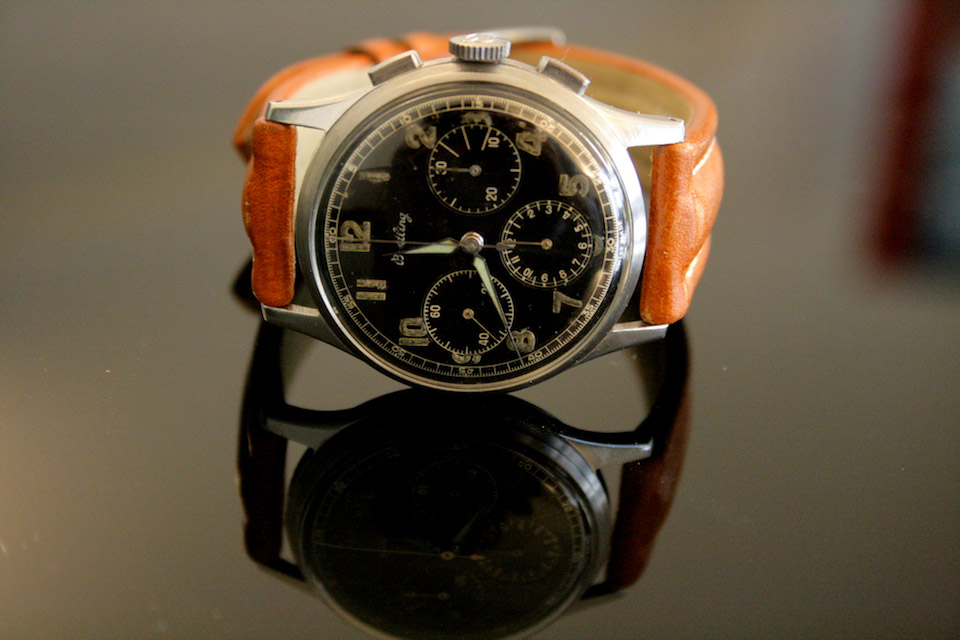
The Venus cal.178 is considered one of the most famous column wheel operated chronograph calibres of all time. It was a 17-jewels, 14 ligne, calibre that beats at 18000 vph and had a 45-hour power reserve. It was a 3 subdial (tri-compax) layout caliber that indicated constant seconds, 15 or 30 minutes and 12 hours. Standard was the 30-minute register, but it could also be modified for a 15-minute register. The Venus calibre 178 derived from calibre 175 which was created in the late 1930’s and competed with the offerings of Lemania, Valjoux and Landeron. It is said that Venus chronographs were the smoothest on the market. As Alan Downing says in his article ‘Venus. The classic column wheel lives on’: “when you start a Venus chronograph with the top button, you also rock the hammer lever on a spring. The lower button triggers the sprung hammers, which fall smoothly onto the heart pieces. Another noticeable difference with the Venus is that it has seven pillars on the column-wheel, while the other chronographs have nine. Fewer pillars mean greater leverage and more reliable operation”.

The watches produced during the mid 30’s by Willy Breitling, under the auspices of the newly formed “Military Division 8” branch of the company, were more often referred to as “EIGHT Air Force” in the catalogues of the era. Breitling used the latest technical improvements to produce cockpit clocks, new robust calibres, oscillographs and other highly specialised instruments using the highest and most stringent quality and manufacturing standards. This high level expertise was used in the company’s making of chronograph wristwatches as well.

By the end of the 1940’s the world was a different place, especially in Europe which was torn by the armageddon of WWII. The war influenced every aspect of human activity, and as such it put the wristwatch in a different position. The face of war changed, so the priorities of the military changed, significantly impacting the design of the wristwatch. The huge B-Uhr of the German bomber crews, the Panerai of the flotilla X-Mas, the Hanhart and Urofa of the German fighter pilots, the Longines HS of the British divers, all these were designs influenced in their inception by the requirements set by the military. Professional watches became larger and more austere. Legibility, waterproofness, and enhanced reliability became the main targets for the industry: It was in fact the trend that led to the birth of the legends. The Breitling watch company proceeded in redesigning a fresher approach of the ref.765 AVI which was introduced to the public in 1953.
The first AVI was a radical departure from the pre-war model. It was a large chronograph (41mm bezel diameter, 22 lug size) with a rotating 12-hour steel bezel, it had a bi-compax layout (6-9 positions) and luminous Arabic numbers and hands. Also it was quite unique since in the 3 position, instead of a date aperture there was a “digital” numeric counter wheel that moved at 15 minute intervals. This 15 minute counter, it was thought at the time, made the life of pilots much easier than than just having a regular subdial. The Venus 178 was highly modified in order to accommodate this feature. Because of that novelty, the model was in those days referred as the 765 Digital.
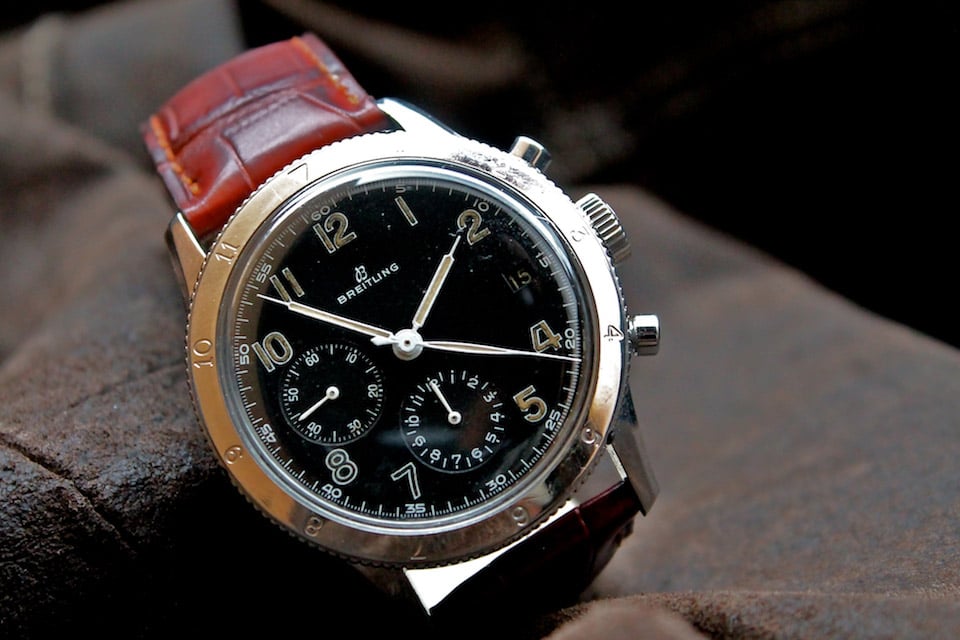

The first models had only the name of the company on the dial, but this changed towards the end of 1953 (the year Breitling moved to Geneve) when models with the inscription of “Breitling, Geneve” on the dial started to become available. The chronograph seconds hand also changed slightly around that time. These details and the number of beads on the bezel are the most reliable way to actually date an early 765 AVI “Digital”. These highly functional, waterproof, and antimagnetic, chronographs with the numeric minute counter stirred the interest of many civilian and military organizations, especially in Europe.
The French and the Italian Air Force in particular became interested in the 765 Avi. As Dracha tell us: “the rumour goes that in 1952/3 Breitling was in serious negotiations with the French Air Force for a military contract, which it finally lost to Breguet/Vixa”. There are specimens with case-backs stamped by the Italian Air Force, both with analogue minute counter as with the aforementioned digital counter. We sadly don’t know if there was an official contract with the Aeronautica Militare, or if these watches were privately bought pending further evaluation. Although these rumors, as Dracha states, are unproven and probably unprovable to this day, they nonetheless seem to prove the obvious regarding the French connection. The watch was deemed a professional chronograph and caused a real stir in military Aviation circles.

Here we must note that the Breitling 765 Avi predates the famous Breguet type XX, which was introduced in 1954 and issued to the Armée de l’Air, Aeronavale and C.E.V (Centre d’Essais en Vol – Flight Test Center). As is widely known, the French used watches by Breguet, Auricoste and Vixa; but it seems that the 765 Avi was a benchmark that influenced these companies when they were designing their models during that period. The French asked Breitling to replace the digital counter with an analogue sub-dial that moved at 15min intervals and the company delivered, however it seems that the political connections of Breguet/Vixa were decided to be more important.

The analogue model of the 765 Avi, born from specifications requested by the French, was introduced to the general public in 1955. Instead of the “Digital” window, we see a normal circular subdial with a hand. The watch bears a strong resemblance to the Breguet Type XX. So, from 1955 onward, there are two models of the 765 Avi: the Digital and the Analogue; and then we reach 1960, when Breitling decides to produce another batch of digital Avis. The 60’s Digitals had thicker hour and minute hands, and fewer but bigger rice beads in their bezels.
The late ‘62 serials had even fatter syringe hands, while there are Avis co-branded by Kronometer Stockholm; these have the logo under Breitling/Geneve in the dial.

Somewhere between 1962 and 1964, Breitling changed from an all-black dial to a ‘reverse’ panda dial. Dracha writes that, “….the earliest ‘reverse panda’ I know of has a ’62 case number.”
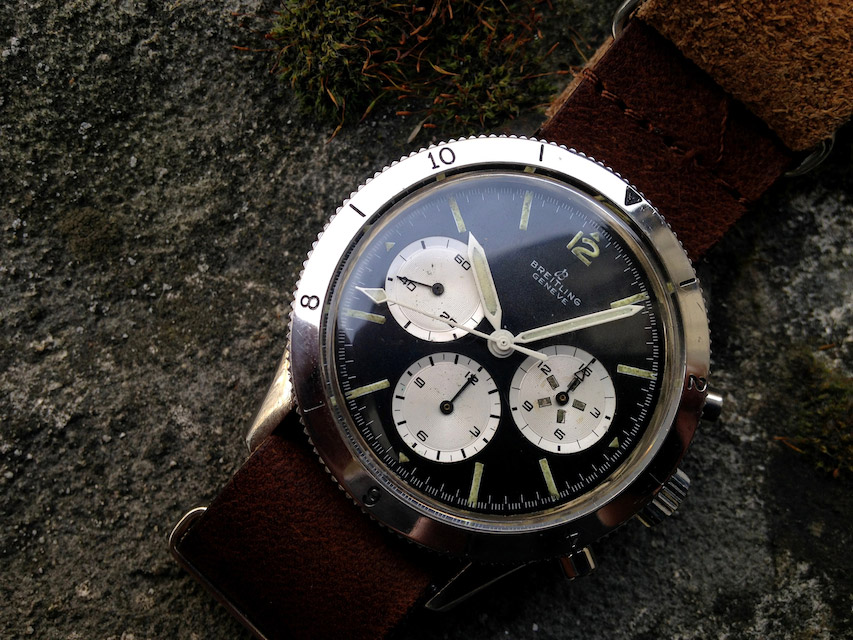
These were produced up until late 1964, when the first big change in the form of the Avi did take place. However we kindly ask you to be patient, as this second period will be examined in part two of our three article series covering the Breitling 765 Avi/Co-pilot chronographs.

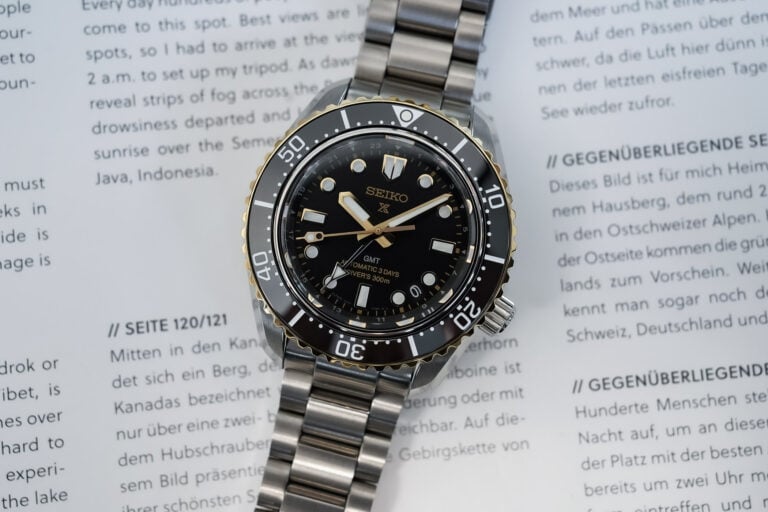
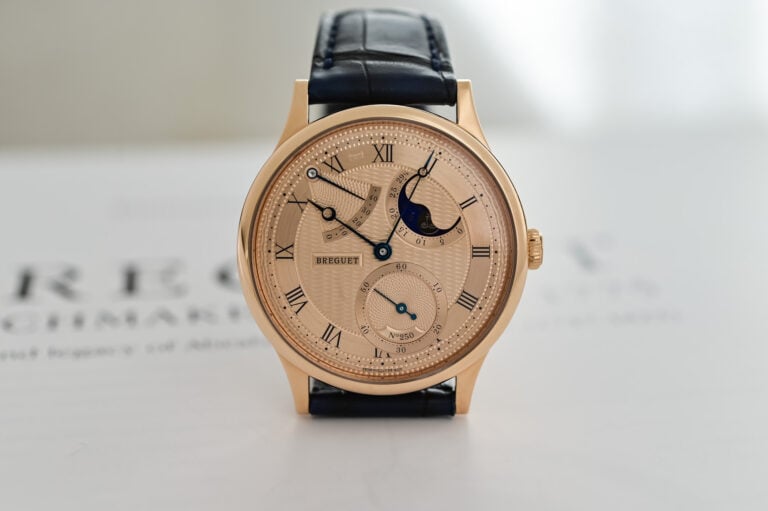
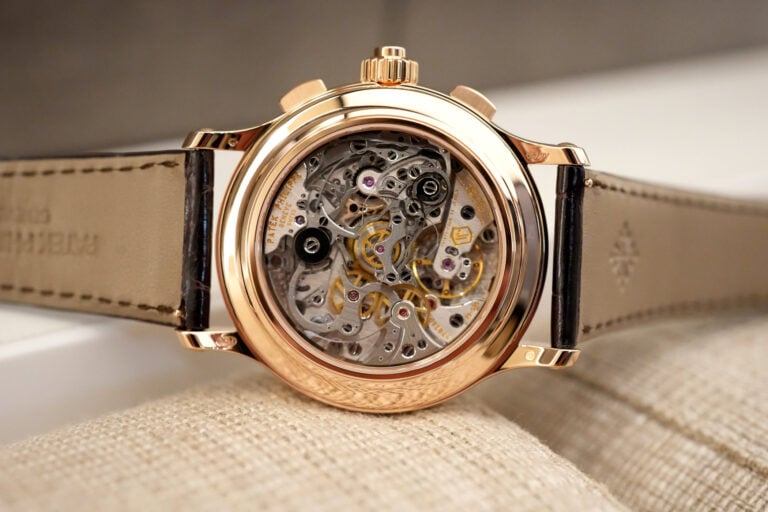
5 responses
I have owned a Breitling Chronograph which I have worn daily for over fifty years. I have not found any source to establish the Model, specifically within
the Breitling brand. Many watches look the same but none are the watch. I have a photograph of this timepiece but there is no way to attach it to this message, can you help, I would appreciate a little information on this piece. Thank you. M.deLesseps
The family name is well established in early aviation.
I would like to identify the Breitling wrist watch chronograph which I have worn daily for over fifty years. I don’t see where I can attach a file photo of this piece Lesseps. My family is well established in early aviation.
Hi Mr. deLesseps
please do send me a pic of the watch in my email.
[email protected]
Cheers
Ilias
Brilliant write-up. Very well done. I am a long time Breitling Collector and fan and still love the brand despite it’s recent decline in popularity. Some of the best watches around.
Please add a link to part 2.